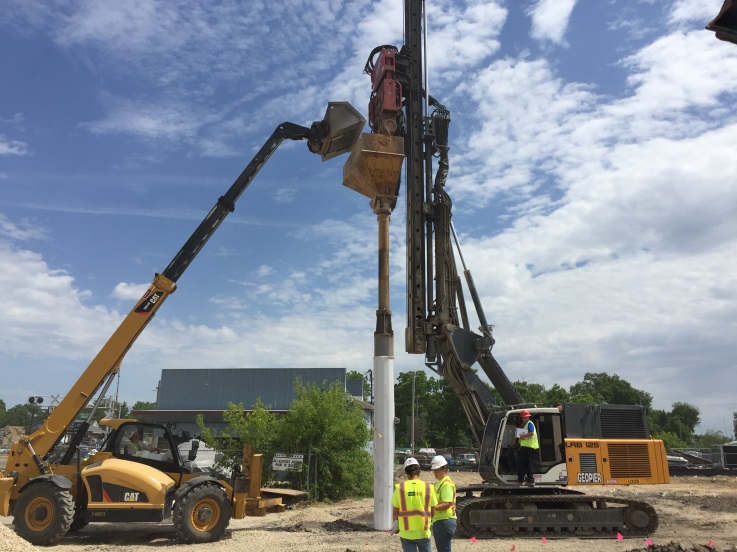Leading Thoughts: 3/19/18 Ground Improvement Transcends “Aggregate Piers”

Charles Allgood, P.E. explains why “aggregate piers” is inadequate terminology to describe modern ground improvement including Rammed Aggregate Pier® systems and Geopier® rigid inclusions.
Lately I’ve noticed the construction community using the catch-all phrase “aggregate piers” to describe ground improvement. Sometimes I even hear “agg piers!” This phrase might work for old-fashioned stone columns but our industry has advanced far beyond that with many new methods and materials.
The earliest use of “aggregate pier” I can find is a December 1994 article in Civil Engineering magazine. This article, titled “Geopiers – short aggregate piers – provide an economical alternative to over-excavation/replacement…” was written by Dr. Nathaniel Fox, PE, the inventor of Geopier®. So perhaps that set the stage.
Now we have Rammed Aggregate Pier® systems using both drilled and displacement methods. Rigid Inclusion systems can be constructed with cement or grout admixtures (GeoConcrete Columns or Grouted Impact Piers) and even high-density plastic confining sleeves (Armorpact® piers); these are transforming what was previously referred to as the “aggregate pier” landscape.

Geopier Armorpact under construction
Examples of Rammed Aggregate Pier are the Geopier GP3® system and the Geopier Impact® system. These use crushed stone so they are closer to the aggregate pier description. The GeoConcrete® and Grouted Impact® system are two rigid inclusion methods that have little in common with “aggregate piers” other than there is some aggregate in them!
The common denominators are: there is a suite of ground improvement techniques to choose from, some are better than others in certain soil types, and all of them allow the structural engineer to design a building for normal spread footings and floor slabs-on-grade.
I suggest that more descriptive phrases be used by the construction community. For instance, if you have an organic soil site you probably want a Rigid Inclusion method for foundation support, not an aggregate pier.
If you have a contaminated site then you may lean towards a displacement (non-drilled) ground improvement solution. If you have a variable fill site you should seek a drilled aggregate pier solution to give confidence that the fill is penetrated. Tailor your wording to the best-fit technologies.
I understand the impulse to be generic, but if sometimes you need to say Geopier go ahead and say it! After all we brought ground improvement to the modern day construction site.
Ground improvement is so much more than “aggregate piers.” Specify what you really want. Enjoy the results.
Read about this two-story retail project using rigid inclusions.
